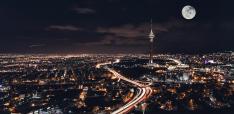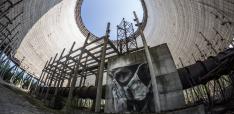Documentary Review: Glacial Balance
Glacial Balance, written and directed by Ethan Steinman. USA: Daltonic Films 2013. 95 minutes, $29.99 DVD.
Watching ancient fields of ice and snow melt is an arresting sight tinged with sadness. While other impacts of climate change happen at an imperceptible scale or speed, the tragedy of the glaciers stands out as one of the most visible facets of this world wide phenomena. In Glacial Balance, director Ethan Steinman focuses on the Andes mountains, going from Colombia to Argentina, and the viewer experiences not just a first-hand look at the melting glaciers, but also the communities and the people who depend on their water as a means of sustenance and livelihood.
The film starts by explicating the science that connects changes in the global climate and glaciers. As Dr. Lonnie Thompson’s research team from the Ohio State University drills for core samples, the audience learns how glaciers grow into massive units that can range in size from that of a football pitch or stretch for over a hundred kilometers. Yet the sheets of hard ice flow gently from higher elevation to low.
The melting glaciers are a loss of history and tradition. A great deal of attention has focused on the environmental effects of melting glaciers: from sea level rise to positive feedback loops such as increased albedo. Less focus has been given to the social aspects. A glacier is more than a field of ice and snow, but is a critical part of a wider system of people, livelihoods, and culture, which has evolved in relation to these imposing features of the landscape. As the film discusses, patterns of human population have followed past glacial oscillations. However, the speed and scope of the current loss threatens to cause a significant disruption for these communities.
The film is primarily narrated by citizens from these frontline communities. This is a strength of the film, and gives voice to the real subjects of the study. Farmers, workers, and even ice collectors lend their viewpoints to the film and provide the audience with a personal connection to the lives that are affected by climate change. The viewer might be surprised to find a significant amount of the film is in Spanish with English subtitles. A focus on the people using their language reinforces the film’s sincerity and honesty: two valuable commodities for any documentary.
The central premise of the movie is that impacts from climate change and melting glaciers create a ripple on this socio-ecological system. The film deals with climate change in two ways. First, it does so largely through the lens of how retreating glaciers are impacting the people and communities that depend on them. Second, the film examines specifically how lower precipitation in these areas has further impacts. Both of these issues underscore the shrinking amount of water available in the environment for the plants, animals, and people that dependent on the glaciers. The director highlights these observations by taking the viewer to a wide range of examples that might not commonly be associated with glaciers, including drying moorlands and a hydroelectric power plant.
The speed at which glaciers are melting forces the viewer to take pause. As the film shows, areas that were buried in ice 60 years ago are now dry and support an entirely different ecosystem. The movie uses historical photographs to show the shocking shrinking coverage of the Pastoruri glacier from 2001 to 2009. Far from an isolated incident, this example is indicative of the new ‘normal’ for these communities, who are scrambling to adapt their traditional ways of life.
As Glacial Balance discusses, climate change is a world-wide phenomena. But, to understand the issue better, the film highlights the micro-climate in different areas. As Jairo Salazar, a coffee farmer, points out, the effects of climate variability are not just global, but have “a local effect.” The impacts are not consistent around the world, but vary based on specific locations. Sadly, as the film documents, in most of these locations the result is dryer and less ecologically and economically productive.
People in the developed world may feel that melting glaciers and the changes in these communities are of little consequence. However, as the director shows, these communities are critical linchpins in global production and trade of key commodities, such as coffee or quinoa. Prices everywhere rise as the agricultural potential in these specific areas diminish. Equally important, the land supports fewer people. As many families in the movie discuss, future generations are choosing to migrate to urban centers instead of continuing to farm.
Juxtaposed with these community stories, Glacial Balance also follows scientists doing glacial studies. The microscopic bits of insect and plant material that the researchers find provide a historical climate record for thousands of years. This quantitative data tells the same story as the villagers; the earth’s climate is changing at a remarkable speed.
One drawback to the film is that it does not always maintain a strong narrative flow. The non-linear nature of the film does not build from established propositions and lead to a conclusion. The film more clearly resembles an intimate travel-log of a voyage from North to South along the Andes, gaining access to people and viewpoints the average tourist could never find.
This film’s balance is scientific and social. As pointed out, ice is fine if it stays one degree below freezing. However, above that point melting can occur rapidly. This threshold is mirrored in the communities that are dependent on these fragile ecosystems. Today, humanity is sliding over the edge of this boundary between stability and rapid change. Reports suggest that in the next few decades, the Andes could lose many of their glaciers. With that melting, these communities and cultures could disappear as well. This timely film warns the viewer that as climate changes, so does humanity.
Scott McKenzie is a PhD student in Resource Management and Environmental Studies at the University of British Columbia. He has a Bachelors of Arts in Environmental Studies, Philosophy, and American Studies from the University of Kansas and a Juris Doctorate from the University of Iowa. His work considers the relationship between the natural environment, human development, and law.


